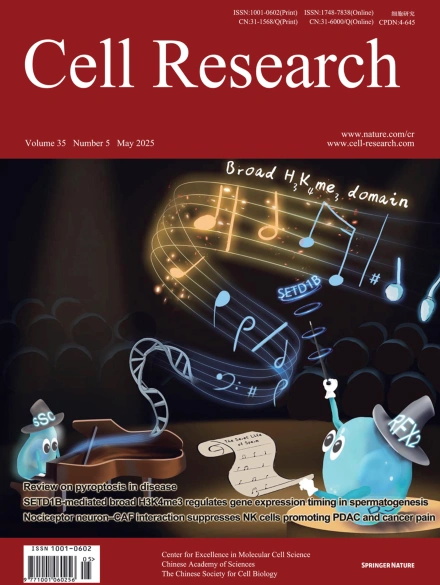
Advanced Search
Submit Manuscript
Advanced Search
Submit Manuscript
Volume 35, No 5, May 2025
ISSN: 1001-0602
EISSN: 1748-7838 2018
impact factor 17.848*
(Clarivate Analytics, 2019)
Volume 35 Issue 5, May 2025: 345-361 |
SETD1B-mediated broad H3K4me3 controls proper temporal patterns of gene expression critical for spermatid development
Zhen Lin1,† , Bowen Rong2,† , Ruitu Lyu2,†,* , Yuxuan Zheng3 , Yao Chen1 , Junyi Yan1 , Meixia Wu1 , Xiaogang Gao4 , Fuchou Tang3,* , Fei Lan2,* , Ming-Han Tong1,*
1Key Laboratory of Multi-Cell System, Shanghai Key Laboratory of Molecular Andrology, Shanghai Institute of Biochemistry and Cell Biology, Center for Excellence in Molecular Cell Science, Chinese Academy of Sciences, University of Chinese Academy of Sciences, Shanghai, ChinaEpigenetic programming governs cell fate determination during development through intricately controlling sequential gene activation and repression. Although H3K4me3 is widely recognized as a hallmark of gene activation, its role in modulating transcription output and timing within a continuously developing system remains poorly understood. In this study, we provide a detailed characterization of the epigenomic landscapes in developing male germ cells. We identified thousands of spermatid-specific broad H3K4me3 domains regulated by the SETD1B-RFX2 axis, representing a previously underappreciated form of H3K4me3. These domains, overlapping with H3K27ac-marked enhancers and promoters, play critical roles in orchestrating robust transcription and accurate temporal control of gene expression. Mechanistically, these broad H3K4me3 compete effectively with regular H3K4me3 for transcriptional machinery, thereby ensuring robust levels and precise timing of master gene expression in mouse spermiogenesis. Disruption of this mechanism compromises the accuracy of transcription dosage and timing, ultimately impairing spermiogenesis. Additionally, we unveil remarkable changes in the distribution of heterochromatin marks, including H3K27me3 and H3K9me2, during the mitosis-to-meiosis transition and completion of meiotic recombination, which closely correlates with gene silencing. This work underscores the highly orchestrated epigenetic regulation in spermatogenesis, highlighting the previously unrecognized role of Setd1b in the formation of broad H3K4me3 domains and transcriptional control, and provides an invaluable resource for future studies toward the elucidation of spermatogenesis.
https://doi.org/10.1038/s41422-025-01080-0